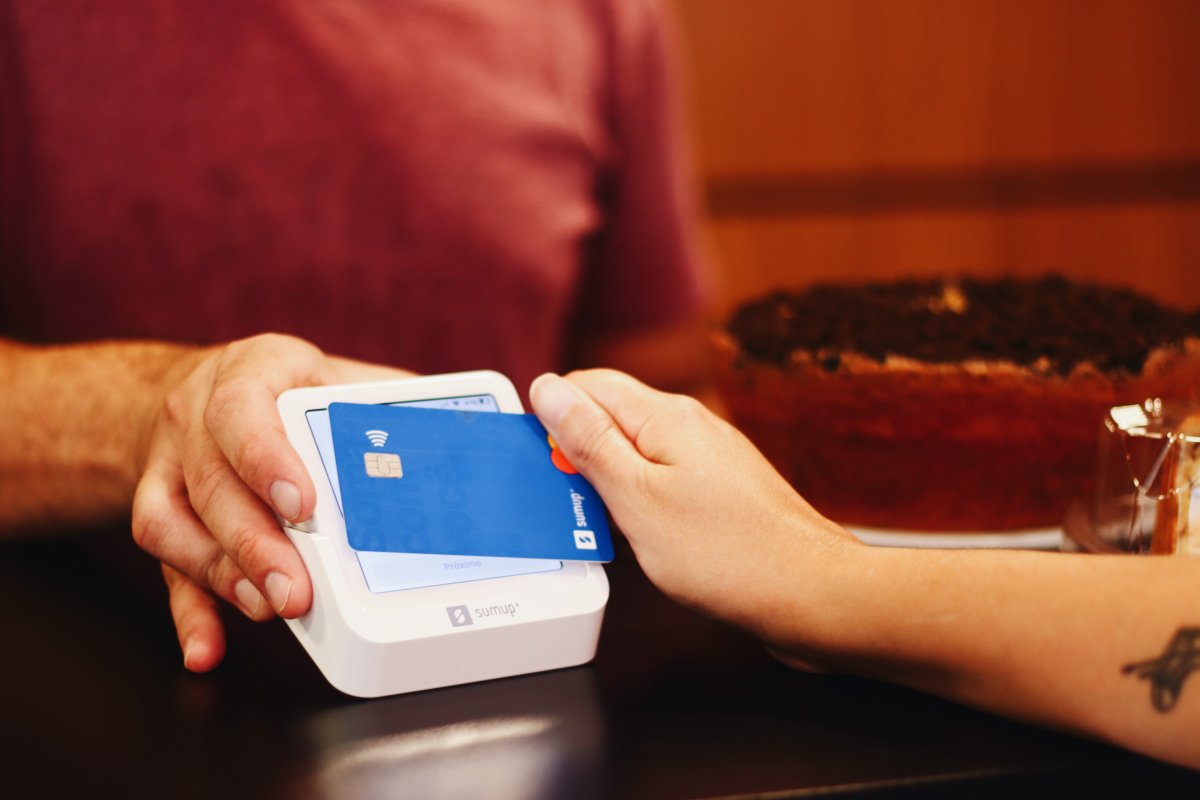In retail, where speed and customer satisfaction are essential, an effective EPOS system is an absolute necessity. The right POS system streamlines everything from inventory management to sales processing, enabling you to focus on what really matters: your customers and your growth.
To help you select the best POS system for your shop environment, my in-depth guide provides a comprehensive overview of the market.

Square Terminal

Shopify Basic

Epos Now Air Card Machine

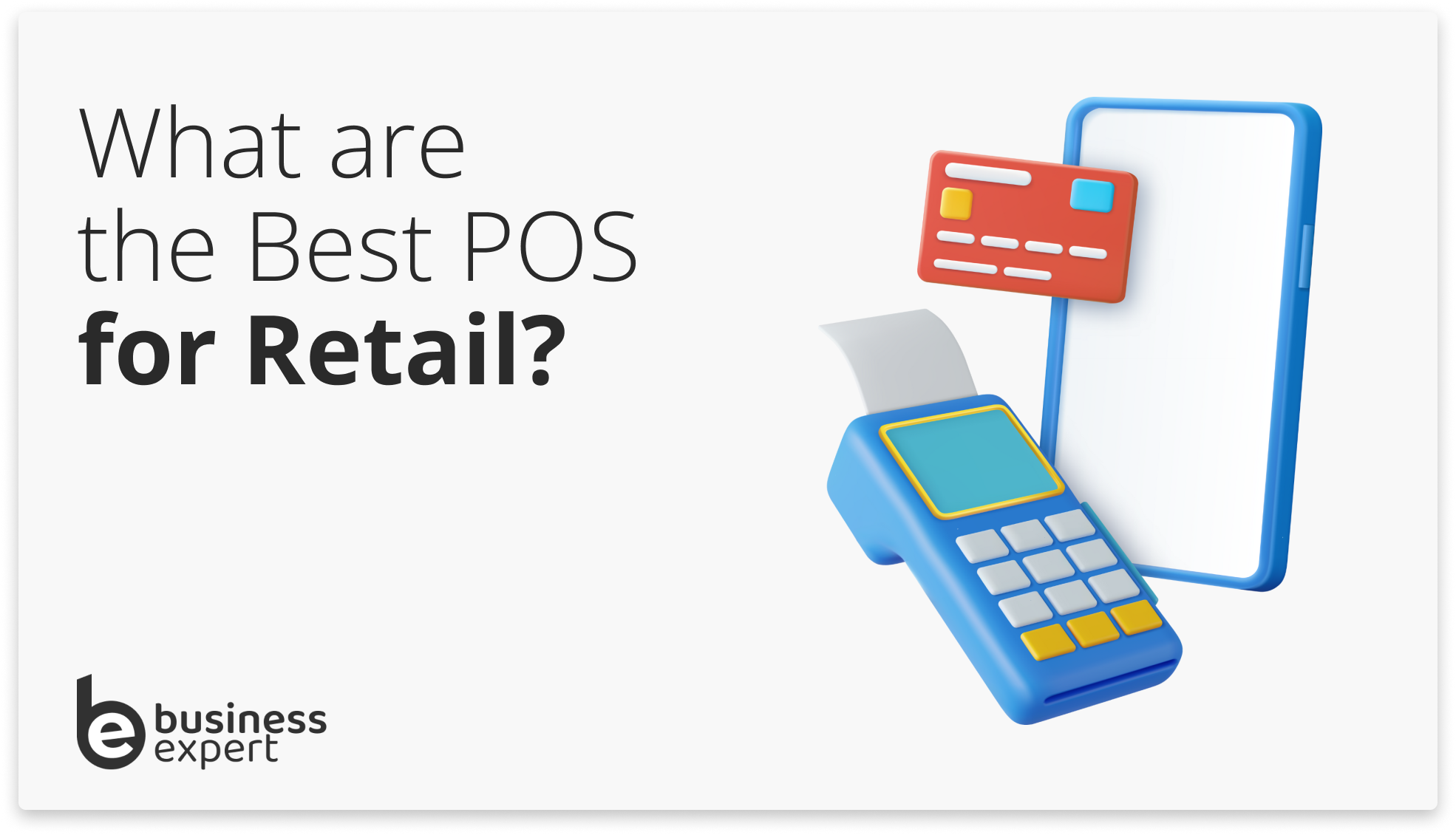
Before diving into my top picks for retail POS systems, it’s important to outline the criteria I used for the article. It included the following:
- Ease of Use: A straightforward interface is critical for the smooth running of your business. It allows your staff to process transactions and manage tasks efficiently.
- Feature Set: I examine the core functionalities like inventory management, reporting, and customer engagement features. These elements hugely impact your business operations and customer experience.
- Reliability: The system’s ability to perform consistently, without crashes or errors, is obviously fundamental.
- Scalability: I assess how well the system can adapt to your business as it grows, both in terms of adding new features and handling increased transaction volumes.
- Cost-Effectiveness: Understanding the total cost of ownership, including any hidden fees or long-term commitments, is key. I look for systems that offer good value for the features and reliability provided.
- Customer Support: Access to prompt and helpful customer service can be a lifesaver in resolving any issues or answering questions that may arise.
Best Retail POS Systems: My Verdict
Choosing the best POS system for a retail business depends on the size of the operation and the complexity of its needs. For new or casual sellers, Square POS stands out. Its lack of a monthly subscription fee and a fixed 1.75% processing rate makes it ideal for businesses with a turnover of £7k or less. The straightforward pricing and no-contract model provide flexibility, which is perfect for market traders or pop-up shops.
For businesses ready to commit to a contract, YumaPOS and Takepayments offer better value. YumaPOS, at £49.99 per month with no upfront cost, includes a till, printer, cash drawer, and payment system, while also allowing you to choose your payment processor for lower rates. Takepayments is ideal for small to medium-sized businesses, offering short-term contracts and next-working-day fund availability, though its feature set is more limited than other options.
For larger or multi-location stores, Epos Now and Lightspeed are the most robust options. Epos Now is highly customisable and integrates well with specialist retail software, while Lightspeed offers industry-leading reporting and analytics. However, Lightspeed requires you to use its own payment processor, which can increase costs. Despite the higher price, both systems provide advanced functionality that can streamline inventory management and drive profits.
7 Best Retail POS Systems for the UK Market
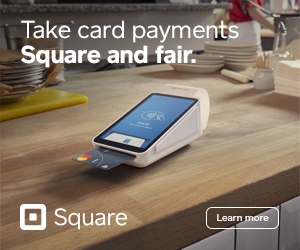
The Retail POS systems I’ve included here all include a high quality score in my tests for UX, security, functionality, customer service, and pricing. Each have slightly different strengths and weaknesses and cater to particular segments of the market.
- Square: Best Entry Level pos for Retail
- Lightspeed: Best for larger businesses who need industry-leading analytics
- Takepayments: Reliable mid level option with competitive rates
- Shopify: Best for existing Shopify users who want to add a POS
- EposNow: Best for medium to large businesses: the UK’s top SMB POS Supplier
- YumaPOS: Best value-for-money for small to medium-sized retail businesses
- SumUp: Best for seasonal businesses with low transaction volumes
Square: Best Retail POS for Businesses with a turnover of less than £5k
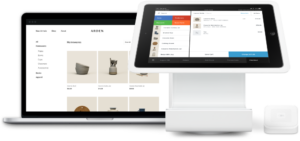
Square is a beginner-friendly POS system with an intuitive interface that’s easy to navigate. It’s an ideal choice for new retail businesses that are still finding their footing, and won’t tie you into contracts.
To give you an idea of how much it might cost to use, an entry-level retail business generating £5,000 per month in card transactions would incur £87.50 in transaction fees each month. Adding the one-time hardware cost of £22.80 (including VAT), the first month’s total expenditure would be approximately £110.30 spent on taking payments.
From the second month onward, the monthly cost would be £87.50 for transaction fees.
Square is all about ease of adoption, simplicity, intuitive functionality and transparent pricing. The Square Reader, their entry-level card reader, offers perhaps the easiest means in existence of taking payments quickly and cheaply. At the mid-level, their Square Stand lets you turn your iPad into an effective POS with a customer-driven checkout and a built-in card reader.
Square can even supply an affordable but slickly designed register. The powerful, fully integrated till system comes with integrated point-of-sale software, payments, and a dedicated customer display. At £479 + VAT‡ or £40 + VAT/mo for 12 months, this is some of the best value on the market.
Features
- Instant Set Up: Square’s intuitive design makes it easy for staff to learn and use the system quickly, even with minimal training.
- Basic Inventory Management: Square provides the essential inventory tracking features that retail businesses need to stay on top of their stock levels and avoid understocking. The system can also send alerts for low stock so you can take proactive steps to replenish your inventory.
- Multiple Payment Options: Square supports multiple payment methods, including credit/debit cards, mobile payments like Apple Pay, and even invoicing.
- Integrated Reporting: Square’s simplified reporting and analytics features make it easy to track your sales trends, customer behaviour, and employee performance directly from your dashboard.
- Customizable Receipts: Square allows you to customize your receipts with your brand logo and additional text.
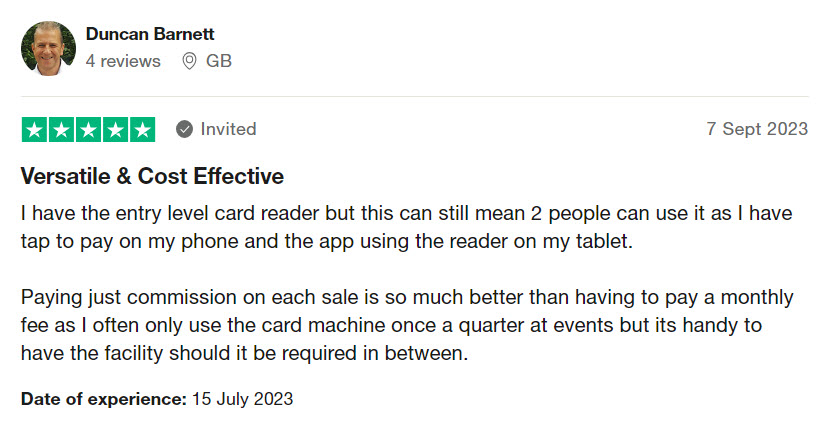
Pricing
What’s important to understand about Square pricing is they offer a blended transaction rate. This means they have a simplified pricing model where the merchant pays a fixed percentage rate for all card transactions, regardless of the card type or issuing bank.
By contrast, providers that tie you into fixed contracts typically offer what are called interchange-plus pricing structures where you’ll be charged less for a debit card transaction than, say, a credit card payment. While being tied into a contract has its disadvantages, interchange-plus pricing is generally more cost-effective for larger businesses.
| Item/Service | Cost | Notes |
|---|---|---|
| Software Plans | ||
| Basic Point of Sale App | Free | Real-time analytics, Inventory management |
| Transaction Fees | ||
| In-person Transaction Fee | 1.75% | Chip and PIN, mobile, contactless payments |
| Online Payment Transaction Fee | 1.4% + 25p (UK) or 2.5% + 25p (non-UK) | |
| Manually Keyed-in Transaction Fee | 2.5% | |
| Hardware | ||
| Square Reader | £19 + VAT | |
| Square Stand | £99 £79 + VAT | Special offer: 20% off until 4th October |
| Square Terminal | £149 £119 + VAT | Special offer: 20% off until 4th October |
| Square Register | £599 £479 + VAT | Special offer: 20% off until 4th October |
Pros
- User-friendly: The interface is designed to be straightforward, lowering the learning curve for new employees.
- Cost-effective: The free tier offers substantial value, and the pricing scales in a manageable way as your business grows.
- Quick setup: You can typically get Square up and running within a day, enabling you to focus on other aspects of your new business.
- Can expand with your business – As you grow, you can opt for Square Premium, priced at £49 per month, to access more sophisticated features.
Cons
- Limited advanced features: While sufficient for new businesses, the feature set may not support larger or more complex retail operations.
- Blended Transaction fees: The blended fee makes it easier for businesses to predict transaction costs but could potentially be more expensive for certain types of transactions, or a higher volume.
Lightspeed: Best Retail POS for Shops with One or More Stores
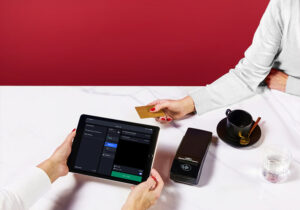
Lightspeed offers a truly powerful POS solution geared specifically tailored for retail. By my analysis, this is the most technically advanced retail POS on the market, and it has some impressive functionality.
Let’s start with a fairly comprehensive suite of features, including inventory management, purchase ordering, loyalty programs, analytics and reports, and e-commerce integration.
I also found Lightspeed Retail’s inventory management system particularly impressive in my real-world tests. It allows businesses to track inventory levels across multiple locations in real-time, sync automatically, and automate purchase orders. This really helps reduce inventory shrinkage, improve efficiency, and streamline your supply chain.
Lightspeed Retail also has a powerful customer management system. Businesses can create customer profiles, track loyalty points, and send personalized marketing campaigns.
Lightspeed offers its own ecommerce functionality, as well as integrating with popular e-commerce platforms like Shopify, so you can manage your online and in-store sales from one platform. You can track all of it via real-time analytics and reports that give businesses insights into sales trends, performance, and customer behaviour. This kind of insight is perhaps Lightspeed’s ultimate USP, allowing businesses granular insights into user behaviour that can really impact profitability.
Price-wise, Lightspeed is a premium product, costing £59 to £139 per month depending on plan. They also tie you in to using their payment processing system which is definitely more expensive than most with transaction fees ranging from 2.6% to 2.9%. These are fees you’re going to have to weigh up carefully, as you make your choice.
Importantly, Lightspeed offers a 30-day free trial so you can try it first.
NB, Lightspeed don’t offer hardware. It’s essentially a cloud based iPad POS system.
Features
- Inventory management with automatic sync across locations
- Detailed sales analytics and reporting
- Customer profiles and loyalty programs
- Order management for in-store and online sales
- Integrated accounting
- Automated purchase ordering
- Integrations with ecommerce platforms like Shopify
- Omnichannel visibility into inventory, customers, and sales
- Cash drawer controls and payments processing
- Barcode scanning and receipt printer support
- Accessible from multiple devices/terminals
- 24/7 customer support
- Custom pricing, discounts, and promotions
- Returns and exchanges management
- Employee permissions and payroll management
Pricing
| Pricing Tiers | Monthly Cost (GBP) | Inclusions | Card-present Rate |
|---|---|---|---|
| Lean | £59 | 1 Register, Integrated Payments, 24/7 Customer Support, Free Training Resources | 1.6% |
| Standard | £79 | 1 Register, Integrated Payments, Accounting Features, Omnichannel Loyalty, 24/7 Customer Support, One-on-one Onboarding | 1.6% |
| Advanced | £119 | 1 Register, Integrated Payments, B2B Catalog, Advanced Reporting, Dedicated Account Manager, 24/7 Customer Support, One-on-one Onboarding | 1.6% |
Pros
- Excellent suite of features, including inventory management, purchase ordering, customer profiles and loyalty programs, analytics and reports, and e-commerce integration
- User-friendly interface
- Scalable to meet the needs of growing businesses
- Cloud-based, so it can be accessed from anywhere
- 24/7 customer support
Cons
- Can be expensive for small businesses
- Some users have reported issues with the reporting functionality
- The e-commerce platform is OK but no substitute for something like Shopify.
Takepayments: best Retail POS System for Independent Boutiques
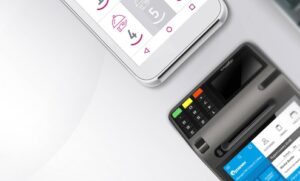
As an experienced POS system reviewer, I’ve tested and reviewed countless systems for retail businesses. Most are either overly complex for small stores or lack key features that owners need. Takepayments POS strikes the right balance, offering a sophisticated yet simple solution for independent boutiques and small shops.
I appreciate how Takepayments caters to the needs of small retailers. Their onboarding agent take the time to thoroughly understand clients’ requirements before advising on the optimal software and hardware combination. If you’re considering signing up with them, a rep will actually visit you at your place of business or a full demo, and to answer questions.
The hardware is elegant, and the Takepayments software has all the essentials covered: intuitive interface, customizable receipts, barcode scanning, inventory and sales tracking, loyalty programs, and more. The e-commerce integration is very easy: Takepayments’ payment gateway integrate via a simple plugin with WooCommerce for WordPress, PrestaShop, Magento, and OpenCart, to name just a few.
Their customer support appears good during several tests I made. Takepayments delivered responsive service to resolve any issues promptly. Ongoing access to an account manager familiar with your business needs is also invaluable.
While Takepayments may not be the right solution for a giant chain with complex requirements, it’s an excellent choice for the average boutique owner seeking a fuss-free POS system to improve efficiency.
Features
- Sleek countertop terminals and wireless card readers
- Intuitive touchscreen interface
- Customizable receipts and branding
- Barcode scanning and inventory management
- Built-in reporting and analytics
- Customer loyalty programs
- Ecommerce integration
- 24/7 customer support
Pricing
| Cost Details | |
|---|---|
| Contract Length | 18-month contract |
| Setup Fee | None |
| Card Machine Rental | Bespoke pricing depending on your business |
| Merchant Account Fees | Bespoke pricing and structure |
| Transaction Rates | Varies based on quote package |
| Monthly Minimum Charge | £20 |
| PCI Compliance Fee | Takepayments fee: £35 per year (optional) <br> Barclaycard fee: £15 per month (mandatory) |
| Payouts | Next day with Barclaycard: Free; Elavon: 30p each |
| Refunds | 30p each |
| Chargebacks | £9 each |
| Early Termination Fee | £30 per month for each month remaining on contract; £40 administration charge |
Pros
- Easy-to-use software designed for small retailers
- Modern hardware with countertop or handheld options
- Unified online and in-store order management
- Responsive and knowledgeable customer support
- Tailored onboarding and training
- No hidden fees or surprise costs
Cons
- Occasional system freezes requiring restart, according to reviews
- Limited advanced analytics compared to larger POS
- Shorter hardware warranty than some competitors
Shopify POS: Best Retail POS for Ecommerce Specialists
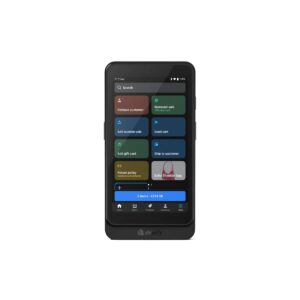
If you’re already a Shopify ecommerce user and want to bring in some in-person payments, Shopify POS is definitely worth considering. They’re moving aggressively into the POS market and 2023’s POSGO unit is definitely going to help them make inroads.
Shopify POS presents itself as a choice for retailers who have an existing Shopify online store or are considering adopting one. It’s carefully designed to ensure effortless management of both online and brick-and-mortar sales, inventory, and customer data. I found the set up process very easily, the APP brilliantly designed, and was impressed features like click-and-collect orders and in-store returns for online purchases.
Overall, this is a way to bolt on POS functionality for someone who is primarily an online seller. I could see it working well for a market stall, an online business which does industry or even a small retail premises. That said, if you’re primary business is retail I would suggest looking more closely at something like Takepayments or, for larger businesses, Lightspeed.
Features
- Impressive checkout capabilities: Accept multiple tenders, apply discounts, print/email receipts, save partial transactions, etc.
- Integrated payment processing: Shopify Payments lets you accept credit cards and popular mobile wallets like Apple Pay.
- Smart inventory tracking: Automatically sync stock levels between online and physical stores. Set up purchase orders, transfers, etc.
- Detailed sales reporting: Get insights into your bestselling items, busiest times, payment methods, and more. Reports consolidate online and offline data.
- Customer profiles and marketing: Track purchase history across channels and segment contacts for targeted email and SMS campaigns.
- Staff management tools: Create employee permissions, track sales by staff member, manage cash drawer access, and more.
Pricing
To use Shopify’s EPOS system, you must first subscribe to one of Shopify’s e-commerce plans. Prices for these plans start at £19 per month for the Basic tier, which includes basic reporting and limited staff accounts. For more advanced features, you can opt for the Advanced plan at £259 per month.
In addition to a subscription plan, you will also need hardware for in-person transactions. You can choose between the WisePad 3 Reader, priced at £49.00, or the Shopify POS Go, priced at £299.00. The Shopify POS Go is very new and acts as a great all-in-one solution that functions as a POS terminal, barcode scanner, and card reader.
| Pricing Tiers | Basic | Shopify | Advanced |
|---|---|---|---|
| Monthly Cost | £19/month | £49/month | £259/month |
| Online Credit Card Rates | 2% + 25p | 1.7% + 25p | 1.5% + 25p |
| In-Person Credit/Debit Card Rates | 1.7% + 0p | 1.6% + 0p | 1.5% + 0p |
| Key Features | Basic reports, 2 staff accounts, Up to 4 inventory locations, Up to 77% shipping discount | Professional reports, 5 staff accounts, Up to 5 inventory locations, Up to 88% shipping discount | Custom report builder, 15 staff accounts, Up to 8 inventory locations, Up to 88% shipping discount |
| Hardware | – | – | WisePad 3 Reader: £49.00, Shopify POS |
Pros:
- Seamless eCommerce integration
- Intuitive, easy-to-use interface
- Included payment processing
- Good selection of POS hardware, including the brilliant POS Go.
Cons:
- Expensive compared to standalone POS systems
- Limited functionality without Shopify subscription
- Can’t accept card payments offline
EposNow: Best Retail Epos for Power, Scale & Stock Management
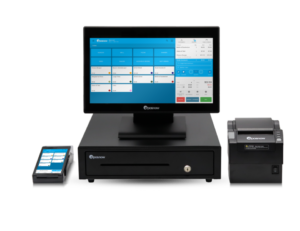
Epos Now is a feature-rich POS system for medium to large businesses in the retail and hospitality sectors.
It offers industry-specific features such as product variants and modifiers, barcode scanning, discounting, loyalty programs, age verification, and a kitchen display system (KDS). One of the features I love is how it Integrates with delivery apps, including Deliveroo.
There’s a lot to like about them, but Epos Now’s pricing plans are not straightforward. The company presents its services as bundled all-in-one packages, which can make it difficult to understand the exact costs involved. Plans are tied to one- or three-year contracts, without the option of a free trial, so potential users should tread carefully.
Additional costs may also creep in, such as a £39 charge for a care and support package. While this is not uncommon in the industry, it could significantly affect your budget, especially if not accounted for in the initial planning.
Customer service is also reportedly inconsistent. While the onboarding process is generally smooth, some users have reported that support during subsequent troubleshooting can be lacking. This is a something to consider, especially for businesses that require immediate support to resolve operational issues.
Overall, Epos Now is a powerful and comprehensive POS system with strong reporting and stock management features. It is best suited for larger operations with complex staff management and reporting needs. However, potential users should be aware of the opaque pricing structure and the mixed reviews on customer service.
Pricing
| System | Annual Cost | Monthly Cost | What You’ll Get |
|---|---|---|---|
| Complete | £799 (£399 discounted) | £47 | EPOS software, Cash till, Cash printer |
| Handheld | – | £29 (£0 upfront) or £15 (£149 upfront) | EPOS software, Mobile device, Card processing options |
| Tablet | £549 | – | EPOS software, iPad POS stand, Receipt printer, Cash drawer, Installation and training |
Pros
- Simple interface: The POS interface itself is straightforward and easy to navigate. Adding items and checking out customers is intuitive.
- Good hardware options: EPOSNow offers a decent selection of hardware like card readers, receipt printers, and iPads that integrate with the POS software.
Cons
- Expensive pricing: The monthly subscription fees for EPOSNow POS plans are quite high compared to competitors like Square. Hardware costs are also above average.
- Poor inventory management: The inventory tracking and reporting features are lacking. It’s hard to get a detailed view of stock levels across locations.
YumaPOS: Best Value-For-Money
YumaPOS offers one of the best value-for-money options for small to medium-sized retail businesses. For just £59.99 per month with no upfront cost, you’ll get a complete package, including a till, printer, cash drawer, and payment system. One of its standout features is the ability to choose your own payment processor, allowing you to shop around for the best transaction rates—a rare flexibility among POS systems.
Its user-friendly design makes managing inventory easy, with real-time stock updates and automated low-stock alerts helping you avoid running out of key products. The system also supports customer engagement with a points-based loyalty programme and personalised promotions, which can be tailored to customer preferences. Over 100 data reports provide valuable insights into sales trends and customer behaviour, making it easier to predict seasonal demand and optimise stock levels.
However, YumaPOS has some limitations. Its retail-specific features are more limited than competitors like Lightspeed, and there are no third-party retail integrations. This means larger stores or those with complex inventory needs may find the system too restrictive. Despite this, for smaller retailers looking for a cost-effective, flexible solution, YumaPOS is hard to beat.
Features
- Inventory management with real-time stock updates and low-stock alerts
- Customisable loyalty programme and targeted marketing
- Over 100 data reports for sales and trend analysis
- Staff management and performance tracking
- Payment processing with support for major payment methods
- Ability to choose your payment processor
Pricing
| Package Type | Pricing |
|---|---|
| Software only | From £59.99 per month |
| Software & hardware bundles | Bespoke pricing tailored for you |
Pros and Cons
Pros
- Excellent value for money with no upfront costs
- Flexible payment processing options
- Strong loyalty and marketing tools
- Real-time inventory tracking
- 24/7 technical support
Cons
- Limited retail-specific features
- No third-party retail integrations
- Less suitable for large or multi-location businesses
SumUp: Best for Low Transaction Volumes
SumUp offers two POS plans tailored for small to medium-sized sports shops. The SumUp Point of Sale Lite plan is ideal for new or seasonal businesses with low transaction volumes. It has no monthly fee, but you’ll need to pay a one-time fee of £349 + VAT for a 13″ touchscreen tablet and Solo card reader. The transaction rate is a fixed 1.69%, which is straightforward and predictable. However, if you sign up for SumUp One for £29.99/month, you can lower the rate to 0.99%—though this means committing to a contract. The Lite plan’s features are fairly limited, handling only single-order processing and basic sales reporting.
For more advanced features, the SumUp Point of Sale Pro plan starts at £49 + VAT/month. This plan includes inventory tracking, sales reports, and a customer loyalty programme. The Pro plan’s transaction rate is negotiable, which could benefit businesses with higher turnover. You can create personalised customer profiles, track stock in real time, and customise the checkout process for faster, more efficient sales. The system also integrates with Shopify and Xero, but integration options are more limited than other systems like Lightspeed.
SumUp POS is portable and easy to use, making it ideal for market stalls and pop-up shops. However, larger businesses may find its limited features and lack of customisation restrictive. Additionally, you can’t choose your payment processor, which means you’re locked into SumUp’s rates unless you negotiate based on high sales volume.
Features
- Single-order processing (Lite)
- Inventory management and customer profiles (Pro)
- Customisable loyalty programme
- Sales reporting and performance tracking
- Integration with Shopify and Xero
- Payment processing with a range of accepted methods
Pricing
| Monthly Cost | Hardware | Card Transaction Fees | |
|---|---|---|---|
| Point of Sale Lite | £0 | £349 + VAT | 1.69% fixed rate |
| Point of Sale Pro | £49.99 + VAT | Bespoke packages | Varies depending on transaction volume |
| Advanced Stock Add-on | £18 | N/A | N/A |
| SumUp One | £29.99 | N/A | 0.99% |
Pros and Cons
Pros
- Flexible plans to suit different business models
- Transparent pricing with no hidden fees
- Fast setup with an intuitive interface
- Portable hardware ideal for pop-ups and market stalls
- Access to real-time sales and inventory data
Cons
- Can’t choose your payment processor
- Basic features too limited for larger stores
- Advanced inventory management costs extra
- No 24/7 customer support
- Limited third-party integrations
What is a POS in Retail?
A POS, or Point of Sale system, in retail refers to the location where a transaction is completed. It’s where the exchange of goods occurs and payment is processed. This system can range from simple cash registers to more complex digital systems that manage sales, inventory, and customer data.
A modern POS system often includes hardware like a computer or tablet, a barcode scanner, and a receipt printer, along with software tailored for retail management. This software can track sales, process payments, manage inventory, and even provide analytics and reports. It’s an essential tool for efficient and effective retail management, streamlining processes and improving customer experience.
Why Does A Retail Business Need a POS System?
A POS (Point of Sale) system does more than just process payments—it helps streamline and optimise various aspects of retail operations.
Here are key reasons why a retail business benefits from a POS system:
- Track online and in-store stock levels in real time to prevent stockouts or overstocking.
- Manage size, colour, and model variants for products.
- Barcode scanning speeds up the checkout process and reduces errors.
- Accept contactless, card, and mobile payments for faster processing.
- Store customer data, including purchase history and preferences.
- Enable personalised recommendations and targeted marketing.
- Provide real-time insights into sales trends and popular products.
- Identify peak shopping times and adjust staffing and inventory.
- Encourage repeat business with customised loyalty schemes.
- Track reward points and apply discounts automatically.
- Schedule fittings, repairs, and personal shopping appointments.
- Track service history and notify customers when services are complete.
- Support click-and-collect, delivery, and online order fulfilment.
- Streamline seasonal discounts and special offers.
- Track staff performance and sales contributions.
What Features Do You Really Need in a Retail POS System?
How do you choose a POS system for retail?
If you’re a market trader, this will be hugely different to that needed by a retail chain with multiple branches. At the entry level, you’ll just need a card reader and a mobile phone to get up and running. A busy shop, however, will need an EPOS terminal, barcode scanner, receipt printer, cash drawer, and a credit card reader, with an optional customer display.
All the providers on this list (except Lightspeed) can offer hardware. But the true functionality of a good system lies in the software which ties everything together and makes it genuinely useful.
I’ve created a table to let you know the range of functionality covered by a decent POS so you can make an informed decision. The key thing to bear in mind is that whichever system you opt for needs to be able to grow with you.
| Feature | Description |
|---|---|
| Payment flexibility | Acceptance of various payment forms, including credit/debit cards, mobile payments, and online transactions |
| Inventory management | Real-time inventory tracking, stock level alerts, and reorder point management |
| Sales reporting and analytics | Detailed sales reports with insights into customer behavior, popular products, and sales trends |
| Customer relationship management (CRM) | Customer data capture, audience segmentation, and targeted marketing campaigns |
| Employee management | Staff clock-in/clock-out, performance metrics, and role-based access |
| Security features | Data encryption, user authentication, and regular system backups |
| Integration capabilities | Seamless integration with other software solutions, such as accounting software, e-commerce platforms, and third-party apps |
| Ease of training | User-friendly interface and quick learning curve |
Hardware Requirements for Retail POS
When selecting a POS system for your retail business, understanding the hardware requirements is crucial to ensure a smooth operation. The essential hardware components typically include:
- POS Terminal: This is the central unit where transactions are processed. It can be a traditional computer system, a tablet, or a specialised POS terminal. The choice depends on the size of your operation and the level of mobility you require.
- Barcode Scanner: Essential for quickly reading product information, a barcode scanner enhances efficiency and accuracy at the checkout. Wireless and handheld scanners offer more flexibility for larger stores.
- Receipt Printer: A reliable printer is necessary for providing customers with physical receipts. Thermal printers are commonly used for their speed and efficiency.
- Cash Drawer: For transactions involving cash, a secure and organised cash drawer is necessary. It should integrate seamlessly with the POS terminal to ensure secure and automatic opening at the end of a transaction.
- Card Reader: With the increasing preference for card payments, a card reader that supports chip-and-PIN and contactless transactions is vital. Ensure it is compliant with payment industry security standards.
- Customer Display System: This screen shows the customer transaction details, enhancing transparency and trust.
- Networking Hardware: This includes routers and network servers to ensure that your POS system is connected and can communicate with other systems within your network.
- POS Scales: For businesses that sell items by weight, like grocery stores, integrated scales are necessary.
- Backup Power Solutions: To prevent data loss and transaction issues during power outages, consider an Uninterruptible Power Supply (UPS).
The exact configuration may vary based on the specific needs of your retail business, such as the size of your store and the types of products you sell. It’s also important to consider future scalability when choosing your hardware.
Cost Comparison of Retail POS Systems
When comparing the costs of retail POS systems, it’s important to consider both upfront and ongoing expenses. These can vary significantly based on the system’s complexity, the features it offers, and the scale of your retail operation. Here are key cost elements to consider:
- Initial Purchase or Subscription Fee: Some POS systems require an initial purchase, while others operate on a subscription model with monthly or yearly fees. Subscription models often include updates and customer support.
- Hardware Costs: This includes the price of terminals, barcode scanners, receipt printers, cash drawers, and card readers. The cost can vary widely based on the quality and quantity of hardware needed.
- Installation and Setup Fees: Some systems may require professional installation and setup, especially if they are complex or need to integrate with existing systems.
- Software Licensing Fees: If the POS system includes proprietary software, there may be licensing fees. These can be one-time payments or recurring subscriptions.
- Payment Processing Fees: Most POS systems include payment processing capabilities, which usually come with transaction fees. These fees can be a percentage of the transaction value, a flat fee, or a combination of both.
- Maintenance and Support Costs: Consider the costs for ongoing maintenance and technical support. Some providers offer this as part of the subscription, while others charge additional fees.
- Training Costs: If the system is complex, you might need to invest in training for your staff.
- Upgrade Costs: As your business grows, you may need to upgrade your system for additional features or to handle more transactions.
- Integration Costs: If you need the POS system to integrate with other business systems, such as inventory management or accounting software, there might be additional costs involved.
- Data Migration Costs: If you’re switching from an old system to a new one, there might be costs associated with transferring your data.
It’s important to get quotes from multiple POS system providers and compare the total cost of ownership over time, not just the initial expense. This will help you make a more informed decision that aligns with your business’s financial constraints and long-term goals.
Retail POS FAQs
Absolutely, various retail POS systems offer tablet-based platforms, typically compatible with iOS or Android systems. This option offers increased mobility and enhances customer interactions in the retail environment.
The standard hardware kit for a retail POS often includes a touchscreen display, cash drawer, barcode scanner, receipt printer, and a payment card terminal.
Security in retail POS systems varies, yet contemporary solutions frequently employ multiple security layers, including data encryption and user access controls, to safeguard retail transactions and customer data.
Certainly, numerous retail POS systems now offer integration capabilities that bridge online and in-store retail operations, offering a cohesive omnichannel retail experience.
The implementation period can vary, though cloud-based retail POS solutions often enable quicker deployment, potentially within a single day, as opposed to more traditional retail POS systems.
Most retail POS system providers offer an array of training options, from comprehensive online tutorials to personalised, in-person training sessions, to facilitate effective system use within the retail environment.
Retail POS analytics provide valuable insights into sales trends, inventory levels, and customer behaviour, enabling data-driven decisions that can significantly optimise retail operations.
Most contemporary retail POS systems allow for role-based permissions, enabling you to control who within your retail establishment has access to specific functionalities, thereby enhancing both security and operational efficiency.
Quality retail POS systems will offer robust features for managing returns and exchanges, typically allowing for quick scanning of original receipts, and the application of refunds directly to the payment method used, all whilst updating inventory levels accordingly.
PCI (Payment Card Industry) Compliance is a set of security standards designed to ensure that all companies that accept, process, store or transmit credit card information maintain a secure retail environment. Non-compliance can result in significant fines and reputational damage.
Many retail POS systems include employee management functionalities, such as time tracking, role assignments, and even performance metrics, offering a comprehensive view of employee activity within the retail setting.

